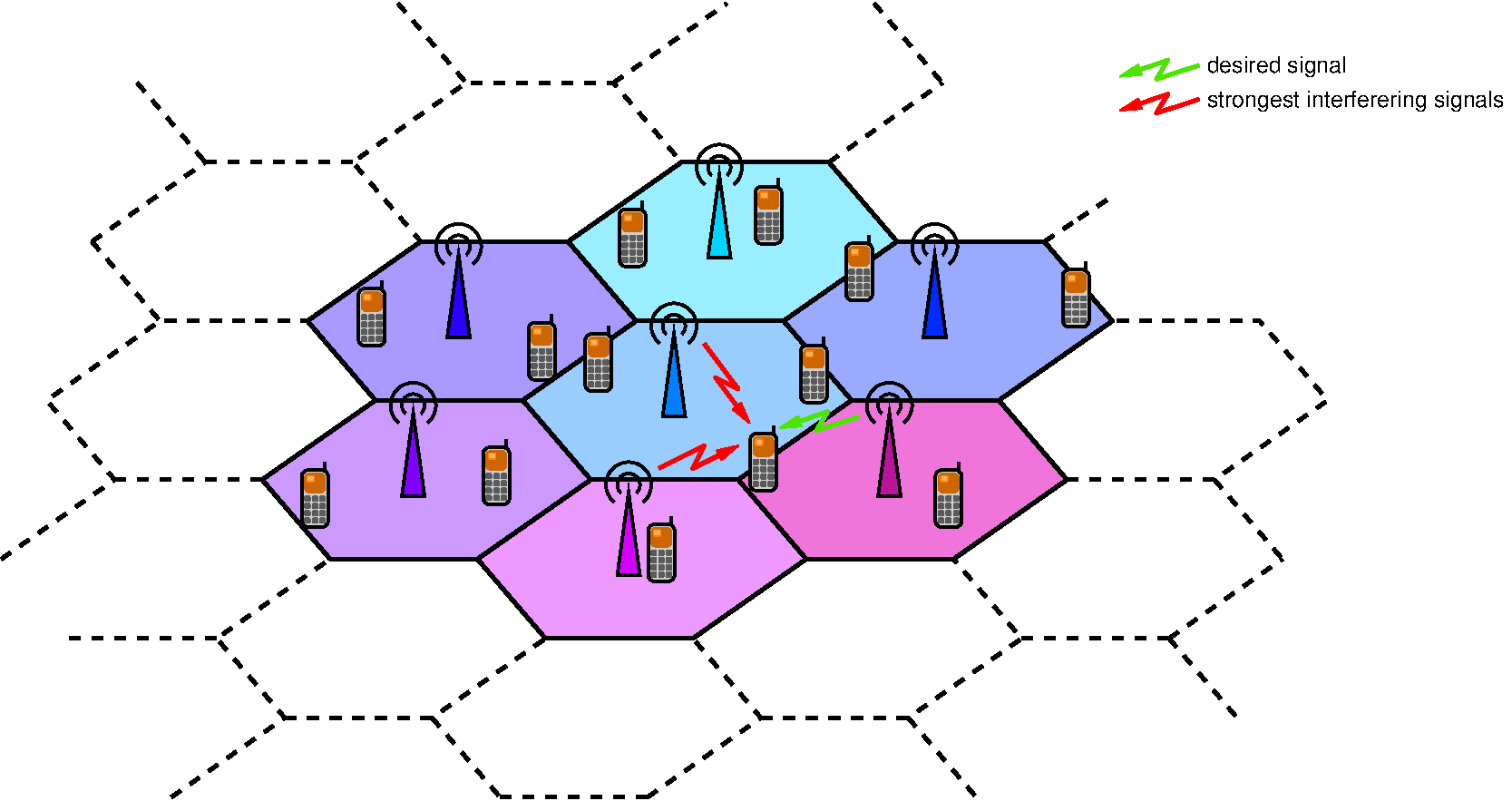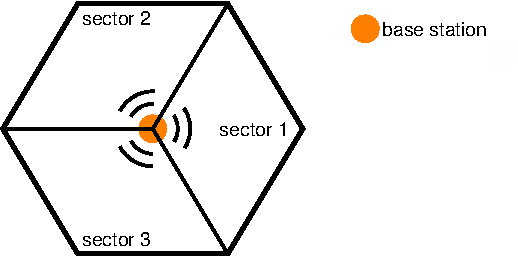
Hi there, a while ago, I wrote a brief and concise history of mobile networks, focusing
on the key milestones in cellular technology. I hope you find it useful!
History and Development of Cellular Networks
The first written reference describing the basic concept of a cellular
telephone network is a technical memo by Douglas Ring, a researcher in
the Bell Telephone Laboratories, from the year 1947. It
then took several decades until the first operative cellular network,
the Nippon Telephone and Telegraph (NTT) system, was put into operation
in 1979, followed by the Nordic Mobile Telephone
(NMT) 900 system in 1981, and the Advanced Mobile
Phone Service (AMPS) in 1983. By then, the
cellular concept had been amended by
cell sectorization
and other essential concepts,
such as handover. From then on, a large number of
incompatible analog cellular systems were deployed, such as the German
C-Netz in 1985. Roaming across country borders was not possible in most cases.
The Foundation of the 3GPP
In 1982, the Groupe Spécial Mobile (GSM) was installed by the European
Conference of Postal and Telecommunications Administrations (CEPT) in
order to develop a pan-European digital cellular telephone system.
This work resulted in the installation of the first digital cellular
networks according to the Global System for Mobile communications
(GSM) standard in 1991. Succeeding the first generation analog
networks, the early fully digital networks such as GSM are seen as the
second generation of cellular networks. GSM focuses on voice services,
but also provides limited data services, such as Short Message Service
(SMS) or Circuit Switched Data (CSD) with relatively low data
rates. The increasing popularity of the Internet and the demand for
multimedia data services led to the development of the General Packet
Radio Service (GPRS), a packet switched extension to GSM, which was
enhanced further towards higher data rates under the name Enhanced
Data rates for GSM Evolution (EDGE). Similar developments took place
in the USA with the introduction of IS-54/136 and IS-95.
Mobile data gains attention
Parallel to the enhancement of second generation cellular networks
towards higher data rates for packet switched data, work began on
third generation cellular networks, aiming at higher data rates for
multimedia services. While the development of first and second
generation digital cellular networks resulted in a variety of
incompatible systems, the goal for the third generation was a unique
standard for worldwide interoperability. This led to the foundation of
the 3rd Generation Partnership Project (3GPP), which is an
international consortium of operators and vendors. Its original
purpose was the development of the third generation cellular network
standard, but it has also taken on the maintenance and further
development of the GSM, GPRS, and EDGE standards. The work of the 3GPP
resulted in the specification of the Universal Mobile
Telecommunication System (UMTS), which is further enhanced for packet
switched services by High Speed Packet Access (HSPA).
Later on, 3GPP was working towards evolved HSPA with increased data rates and a simplified network architecture. Furthermore, a new air interface was standardized by the 3GPP under the name Long Term Evolution (LTE), aiming at even higher data rates. Accompanying the work on an advanced radio interface, a separate working group within the 3GPP studied aspects of the System Architecture Evolution (SAE), aiming at an all-IP based evolved packet core network. Again, in the USA, a parallel development took place with the introduction of cdma2000 and its packet switched extension Evolution Data Only (EV-DO).
Later on, 3GPP was working towards evolved HSPA with increased data rates and a simplified network architecture. Furthermore, a new air interface was standardized by the 3GPP under the name Long Term Evolution (LTE), aiming at even higher data rates. Accompanying the work on an advanced radio interface, a separate working group within the 3GPP studied aspects of the System Architecture Evolution (SAE), aiming at an all-IP based evolved packet core network. Again, in the USA, a parallel development took place with the introduction of cdma2000 and its packet switched extension Evolution Data Only (EV-DO).
A Global Standard?
A common global standard for cellular networks was also the goal of
the International Telecommunication Union (ITU). It quickly became
obvious that this was an unrealistic goal due to too many competing
standardization efforts, such as cdma2000 developed by 3GPP2, the
North American counterpart to 3GPP. As a consequence, the ITU began
to promote common architectural principles under the name
International Mobile Telecommunications -- 2000 (IMT-2000). Several
different radio access technologies have been approved as IMT-2000
technologies. Among these are Universal Terrestrial Radio Access --
Frequency Division Duplex (UTRA-FDD) within UMTS as well as EDGE.
WiMax - The long forgotten standard
Later on, in October 2007, a subset of the IEEE 802.16e standard was
included in IMT-2000. In particular, this was the Time Division Duplex
(TDD) radio interface based on Orthogonal Frequency Division Multiple
Access (OFDMA). IEEE 802.16e resulted as an extension of the IEEE
802.16 standard for fixed broadband wireless access, with the primary
goal of delivering broadband mobile access. The IEEE 802.16 standard
family has been developed within the IEEE in parallel to the 3GPP
activities and can be seen as a late competitor to HSPA. However,
while 3GPP-based systems define a full system architecture from the
air interface back to the core network including management functions,
the IEEE 802.16 standard focuses on the air interface technology. IEEE
802.16e is promoted by the WiMAX Forum, an industry-led organization
that specifies system profiles, supplemental architectures, and
interoperability tests. It is therefore also responsible for
the certification of WiMAX-compliant devices.
The inclusion into IMT-2000 was a major success for IEEE 802.16e, giving it the same privileges as the other IMT-2000 technologies. This includes access to precious frequency resources, which are reserved for IMT-2000 technologies in some countries. Recently, ideas are being collected within the 3GPP for systems beyond IMT-2000. Alike, the IEEE 802.16e Task Group~m (TGm) works on the further development of the IEEE 802.16 air interface. These next generation technologies are also handled under the term IMT-advanced, the dedicated successor of IMT-2000.
The inclusion into IMT-2000 was a major success for IEEE 802.16e, giving it the same privileges as the other IMT-2000 technologies. This includes access to precious frequency resources, which are reserved for IMT-2000 technologies in some countries. Recently, ideas are being collected within the 3GPP for systems beyond IMT-2000. Alike, the IEEE 802.16e Task Group~m (TGm) works on the further development of the IEEE 802.16 air interface. These next generation technologies are also handled under the term IMT-advanced, the dedicated successor of IMT-2000.

Typical hexagonal model of a cellular network

Typical three-sectorized cell
Imprint —
Terms & Conditions —
Privacy policy —
Revocation Right —
Image copyright —
Contact us
— Press and media